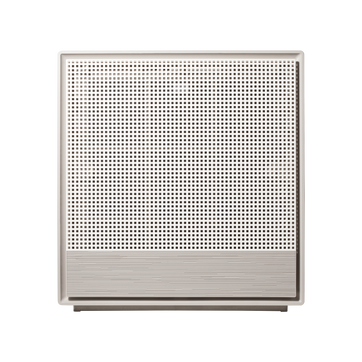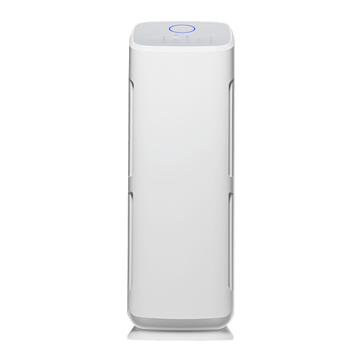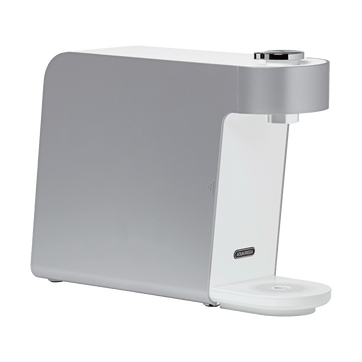
3 Global Toilet Types You Should Know
As any seasoned traveler will tell you, there's a wide variety of toilet types around the world. At first glance, it might seem like a French toilet has about as much in common with a Japanese toilet as the Eiffel Tower has with Mt. Fuji. While some Americans might be skeptical of the European toilet-and-bidet system, or simply confused by the high-tech, feature-laden Japanese commode, their popularity is one reason products like smart bidets are gaining ground in the American market.
Let's look at the fundamental differences of the three styles.
1. What is an American toilet?
The basics
You're likely familiar with the American toilet, but we'll refresh your memory. The American toilet has a round or oval bowl that contains water. Solid or liquid waste is deposited into the water, toilet paper goes in as well and then comes the engineering miracle of the American flush.
The flush
Depressing the handle on the outside of the tank lifts a rubber stopper that opens a flapper valve, and the water in the tank (a government-mandated 1.6 gallons) whooshes out. It doesn't go straight into the bowl — instead, the water rushes (thanks to gravity) down a passage to the base of the bowl, where it surges out well below the surface level of the bowl water.
Siphon
The water from the tank shoots into an outgoing pipe, immediately creating a vacuum or siphon that effectively sucks the bowl water and waste out of the toilet, through a trap (that's the wiggly part of the pipe visible from the exterior) and into the sewage system. Though American toilets have a certain familiar look, it's the siphonic mechanism that really differentiates American toilets from those in Europe and Asia.
2. What is a European toilet?
Many nations, many toilets
You'll find a great variety in toilet styles across Europe, including plenty of the old hole-in-the-floor "squat" toilets. But the most common by far is the "washdown" toilet.
A different flush philosophy
The washdown toilet has a deeper bowl and does not siphon out its contents. Instead, the washdown toilet depends on rapidly flowing water released from the tank (again, thank you gravity) to wash waste downward, through a trap and into the sewage system. It's the difference between pulling and pushing: the siphonic American toilet pulls or sucks the contents out of the bowl, while the washdown toilet pushes them down and out.
How a washdown compares to a siphon
European toilets use less water (and may have the "dual-flush" option that lets users choose a lighter flush for liquid waste), and there's less splashback and less noise involved. But European toilets need more cleaning, as traces of waste often stubbornly remain on the side of the bowl, and for this reason European toilets tend to retain an odor that American ones don't. To make the siphon system work, American toilets must have smaller passages, and are therefore more prone to clogging.
The Euro toilet's trusty sidekick
European toilets often have a porcelain relative at their side: the bidet. The bidet represents a different approach to cleaning your backside. Equipped with faucets and its own bowl, the bidet is about washing yourself, rather than simply wiping. When properly used, the bidet leaves you cleaner than you could ever get from using a roll of dead trees.
3. What is a Japanese toilet?
As in Europe, you'll find a variety of toilets in Japan, some of them a bit confusing. But the go-to Japanese toilet is a high-tech commode (called a "super toilet" or known by the brand name Washlet) with numerous features and a control pad. It was introduced in the early '80s and now around half of Japanese households have one.
Features you didn't know you needed
A Japanese super toilet might feature automatic lifting of the lid, automated flushing, a heated seat, music and massage functions, all operated by a wireless control pad. Like a TV remote, the control pad may also enable you to adjust the heating or air conditioning in the room for maximum comfort.
It all starts with the bidet
While the more exotic options on a super toilet may vary, the bidet is standard, and is built into the toilet — so there's no need to move to a separate fixture as in Europe. Depending on the super-ness of the super toilet, the bidet may also come with controls for customization, such as water temperature, pulsating flow and a blow-drying feature.
Which toilet is best for you?
Transportation, communication and education have all evolved dramatically in the last few decades — while change has been welcomed in many fields, there's a tendency to resist changes in our bathrooms.
But change may be easier than you think — new, modern bidet seats like the Coway Bidetmega 200 can connect to your existing toilet in minutes, no plumber required. Its dual hygienic stainless-steel nozzles are the modern way to enjoy the classic cleanliness of the European toilet experience.
What's more, the Coway Bidetmega 200 features a customizable i-wave system, a heated seat and a sensor to ensure it only does its job when you're there, all operated with a handheld remote — in other words, a personal cleaning experience on par with a high-end Japanese toilet.
Disclaimers
1Coway air purifiers have been proven to trap dust, pollen, dander, viruses and bacteria in the air based on KCL (Korea Conformity Laboratories) testing.They have been tested in a 30㎥ size chamber according to the Korea Air Cleaning Association standard (SPS-KACA 002-132:2022 Modified) to measure the 0.01㎛ size of particle removal rate. It was tested on maximum airflow speed in normal room temperature and humidity conditions. The performance may vary in the actual living environment of customers.
→ Tested with Airmega Aim, 100, 150, 160, AP-1216L, AP-1512HH, AP-1512HHS, 200M, Icon, IconS, 230, 240, 250, 250 Art, 250S, 300, 300S, 400, 400S, ProX
299.97% of viruses, bacteria, fungi and pollen were verified to be removed from the air for Coway air purifiers which have Green True HEPA™ filter applied based on the Japan Food Research Laboratories(JFRL) testing according to JEM 1467 standard.
→ Tested with Coway Airmega AP-1512HH, AP-1512HHS, 250, 250 Art, 250S, 300, 300S, 400, 400S
→ All tested by JFRL and received above result within below time.
All tested by JFRL and received above result within below time.
- Virus: Tested with Escherichia coli phage ΦX174 NBRC 103405, 60 minutes
- Bacteria: Tested with Staphylococcus epidermidis NBRC 12993, 60 minutes
- Fungi/Mold: Tested with Penicillium citrinum NBRC 6352, 60 minutes
- Pollen: Tested with Cedar Pollen extract, 60 minutes
3Aerosol test conducted in a Biosafety level 3 laboratory with two Coway air purifier models, Coway Airmega 250 and 400 for removal of SARS-CoV-2 Aerosol by US based MRI Global, a not-for-profit laboratory and partner of US Department of Defense. The test was conducted in a 13.1ft3 chamber. Virus was aerosolized for 15 minutes and the product was turned on high for 2 minutes. Result showed each product effectively removed over 99.98% of the SARS-CoV-2 in 2 minutes. This is a result from a laboratory experiment condition and result may vary in different conditions. This result does not imply it kills SARS-CoV-2 or prevents the transmission of Covid-19. Coway Airmega 250S and 400S are identical to the tested models and has equal performance with an additional mobile connectivity function.
4The concentration of ammonia, acetaldehyde and acetic acid were proven to be removed within 30 minutes by FCG Research Institute, Inc. Human Life Science Lab. It is not a demonstration result in the actual use space. Not all odors and gases may be supported. → Tested with Coway Airmega 150, 160, AP-1512HH, AP-1512HHS, 400, 400S
5The coverage area of the air purifier is based on an area where the air cleaner can make two air changes per hour (ACPH). An air change per hour translates to how many times an air purifier can clean an area, assuming the height of a ceiling to be 8 ft, in one hour. Therefore ** means two air changes per hour means that the cleaner can clean the area once every 30 minutes and * means air changes per hour means that the air purifier can clean the area once every 60 minutes.
10Terms and conditions apply. Discounts, including promotions, coupons, bundle discount and subscription discount, cannot be stacked on top of other coupons. During promotional periods, discount codes will not be able to be applied to orders. Promo codes may apply to products only—filters, accessories, and new products within 3 months of the release date are not included.





























